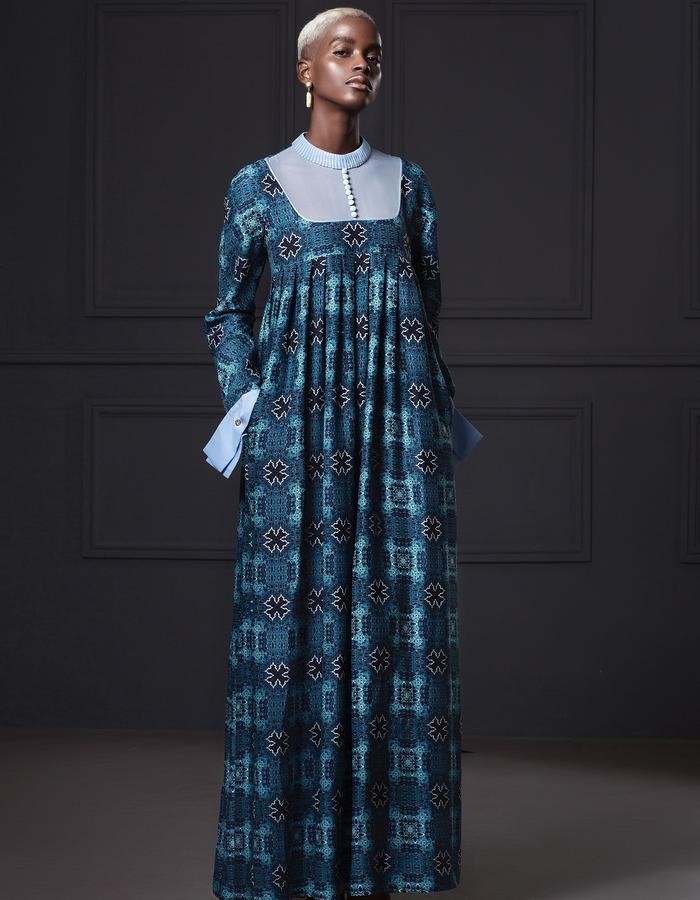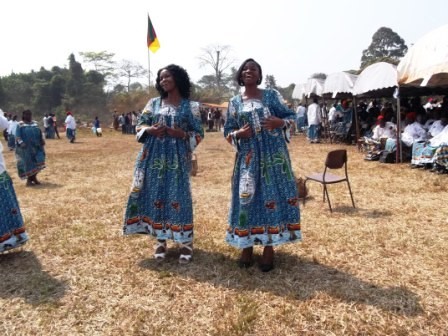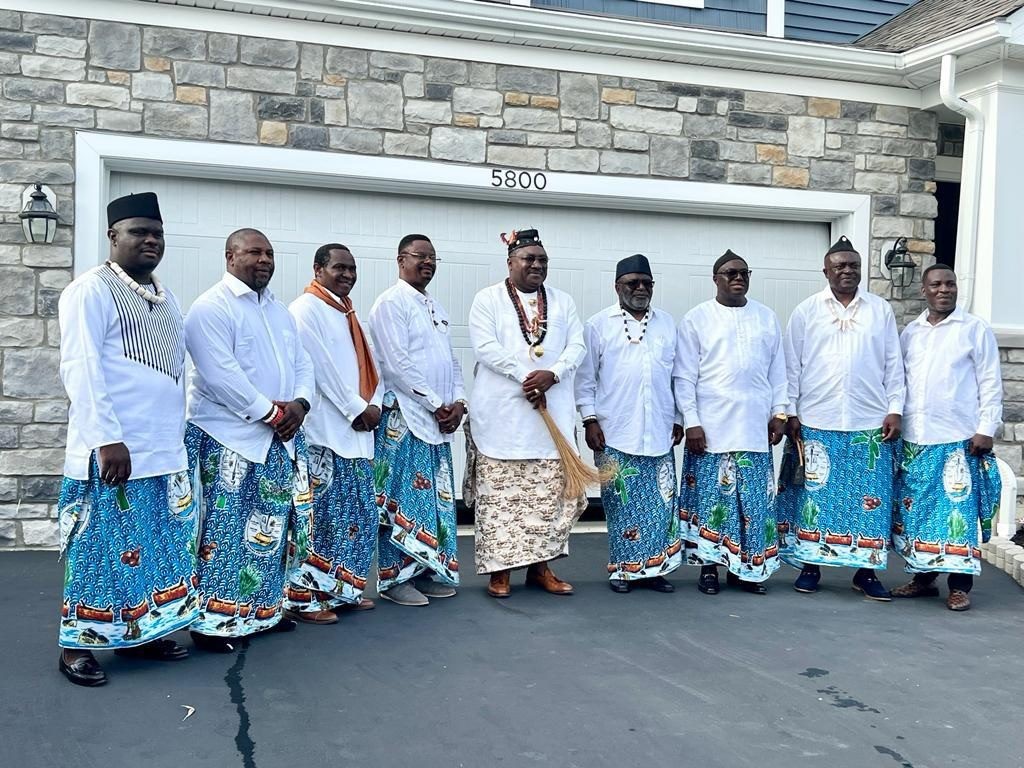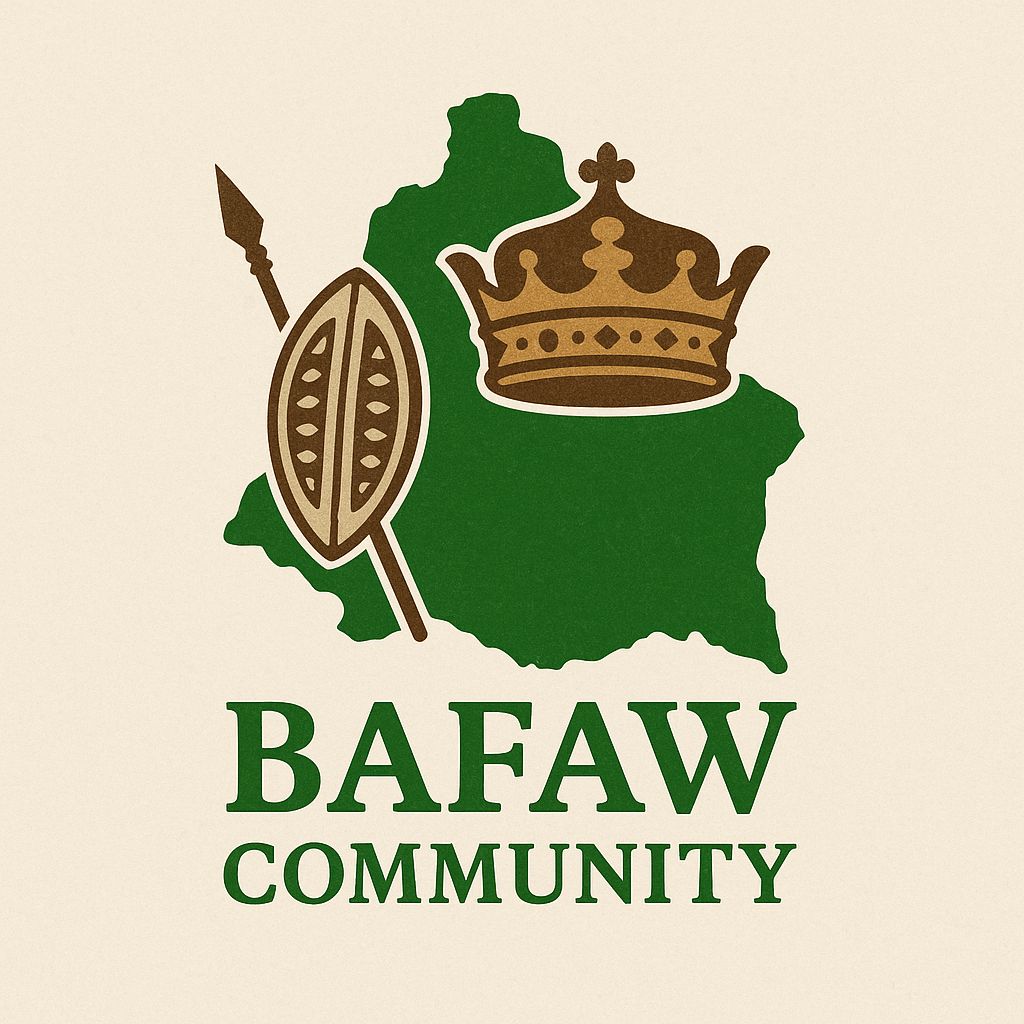BAFAW CULTURAL ATTIRE
When it comes to expressing our identity, our elegant traditional attire sets the right tone. Accompanied with clothing accessories that pulls attention and sparks curiosity, we will be unveiling in this article, why the Bafaw traditional attire gives off a majestic persona whenever we wear them.
Generally known as the “Kaba” and the “Nsanja”, these traditional regalia are styled with significance and according to the presented occasion.
“KABA”

Identified by its full-length, lose-fitting and colorful African fabric, the “Kaba” attire is an elegant traditional design we use to identify the “Bafaw Woman”.
The “Kaba” is worn for several occasions and styled differently to suite the occasion. A typical Bafaw Woman has at least one of these three main types of “Kaba”; a “House kaba”, a “Ceremonial kaba” and an “Elegant kaba”.
The “House kaba”, predominantly worn for domestic purposes, goes from a freeware perfectly suited for domestic chores, to a simple stay-at-home freeware that are ideal for cold weather and seasons.
The “Elegant kaba” is made from beautiful and vibrantly colorful African fabrics and often decorated with lace, embroidery or intricate designs. The Bafaw Woman completes this outfit with a head-tie scarf, a shoulder scarf (optional) and jewelries, often made with cowries.
For the “Ceremonial kaba”, it is worn for cultural events such as the “Mbum Bafaw” cultural festival, the “Dibala” festival, marriage and burial ceremonies. Styled as the “Elegant kaba”, the “Ceremonial kaba” is often made from uniform materials like Bafaw fabric initiated by the Bafaw Cultural and Development Association (BAFCUDA).
In occasions where the Bafaw Woman ties a scarf on her waist, over her Kaba, often signifies that she is either in mourning of the loss of a loved one or in performance for some traditional practices during festivals. Another traditional outfit common for Bafaw women during cultural festivals is a knee-length wrapper and a blouse which is only worn for cultural dance performances and other practices.

“NSANJA”
The “Nsanja” attire is designed as a floor-length wrapper, tied from the waist down and paired with a decorated shirt, preferably white, which signifies brightness, purity, holiness and peace. The “Nsanja” is styled with the accessories; a staff with hairs or broom (elodi’nfon), traditional circular matchet (peh e ngve), small sac (ekpadi’nfon), cap with eagle feathers (anyapu), wrists and neck chains.
In the Lifor, this is called “elodi‟nfon” which symbolizes authority. The Bafaw man holds it in his right hand when walking, sitting or standing. He uses it to greet people and to command authority.
The Bafaw man is naturally hardworking. He uses the matchet particularly for farming. He carries a matchet as a sign of his readiness to work when need arises.
This symbolizes wealth. The land of the Bafaw people is a very fertile land in terms of production. This gives the people riches for real wealth is in land for God has blessed the Bafaw with a lot of land. The Bafaw man carries the ekpadi’nfon as a symbol that he is wealthy and at all times there must be something good from the bag to share.
A black cap, “anyapu” is worn by the men with or without the feathers; a long red cap is worn by the traditional counselors; and the Nfon puts on the black cap decorated with cowries and a red eagle feather, which he can easily be identified by strangers due to its distinct appearance. Wrists and neck chains made of cowries are worn by both the men and the women to beautify their attire.
When performing some traditional rites and practices, the Bafaw man also dresses in a knee-length or floor-length wrapper with simple innerwear or a t-shirt.

Some Symbolisms of the Bafaw (BAFCUDA) fabric;
Drum (nguum)
This drum is used to pass out a message, especially when someone dies or the Nfon needs the presence of the villagers to assemble at the palace for important information or discussion.
Small Clubs to hit the Drum (nteh)
The nteh is used to play the nguum. The nguum is played with various sounds depending on the message it is passing out. For example, the sound played by the nteh when someone dies is different from the sound played when the Nfon wants the people to assemble also different from the sound played when there is good news, such as the childbirth of the Nfon’s wife.
Conical Metal Ngong (nkenge)
Just as any other metal ngong for music, the nkenge is used by the Bafaw man to announce the arrival of the Nfon or to usher him into a ceremony. This is played only by a traditional counsellor selected or appointed for that purpose. Not anyone is allowed to play the nkenge as well as the nguum.
Plantain Stock Symbolism
The image of a plantain represents fertility in Bafo (Bafaw). This was significant in the Dibala festival (an annual festival by the people), where women of childbearing age having difficulty conceiving were expected to take in pregnancy after the Dibala festival.
Cocoa Plant
It signifies the activity the Bafaw people are specialized in. Apart from just food crops from their farms, the Bafaw also produce cocoa, which boosts their economy. This production helps the country’s economy to boom due to the efforts the people put in from their farms.
River with Woman doing Fishing
As the Bafaw man embarks on farming, the women also engage in fishing in their river Elongo, commonly known as “Kumba Water”. To be able to be a successful fisherwoman, you must be initiated into the wolua group. This group is made up of women who are known to be specialists in fishing.
We conclude with these facts that the Bafaw traditional attire is not just an elegant display of culture and fashion but a prestigious identity for the Bafaw people.

